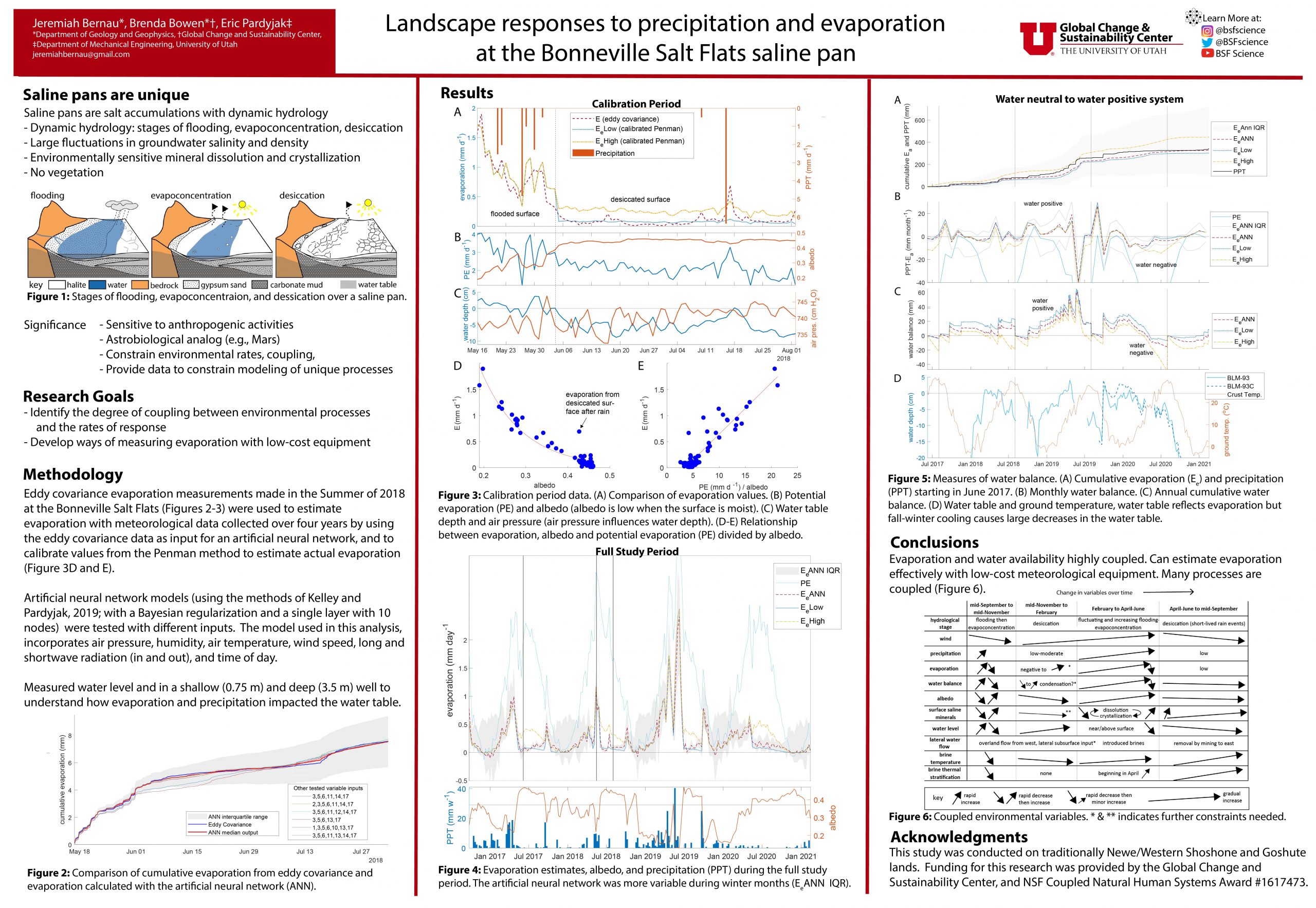Groundwater-surface-atmospheric interactions at the Bonneville Salt Flats saline pan
– Jeremiah Bernau, Brenda Bowen, Eric Pardyjak[bs_collapse id=”collapse_744c-3c6f”]
[bs_citem title=”Bio” id=”citem_be45-fde8″ parent=”collapse_744c-3c6f”]
Jeremiah is a Ph.D. student in geology. His work focuses upon how the atmosphere, biosphere, and geosphere interact with the unique saline crust at the Bonneville Salt Flats. When he isn’t out doing salty fieldwork he enjoys his time cooking, and has learned the value of the best seasoning, salt!
[/bs_citem]
[bs_citem title=”Abstract” id=”citem_8b6a-6bc3″ parent=”collapse_744c-3c6f”]
The Bonneville Salt Flats is a large, dynamic saline pan in western Utah. Saline pans are unique environments with rapidly fluctuating surface morphologies, water table levels, and fluid compositions. This research uses environmental observations to constrain interactions between hydrology, mineralogy, surface morphology, and radiative forcing on diurnal, seasonal, and annual timescales. The saline pan undergoes distinct stages of flooding (increasing evaporation trend), evaporative concentration (decreasing evaporation trend), and desiccation (very minor evaporation). Subsurface water levels fluctuate on diurnal timescales with temperature and air pressure. These observations have implications for mineral growth at the surface and shallow subsurface and to understand how these landscapes respond to increasing aridity. Saline pans are unique systems to explore interactions between the hydrosphere, atmosphere, and geosphere.
[/bs_citem]
[bs_citem title=”Narrative” id=”citem_15c6-f755″ parent=”collapse_744c-3c6f”]
The Bonneville Salt Flats is a vast unique landscape consisting of a salt crust in western Utah. Environmental processes are impacted by the presence of this crust. This study found that the salt crust severely limited evaporation of groundwater, even though the groundwater was within inches of the surface. It developed a method to use low-cost meteorological measurements to estimate evaporation. Using this method it found that all evaporation at the Bonneville Salt Flats comes primarily from rainwater and not groundwater. Groundwater evaporation may have been higher in the past, before humans altered this system by mining it for potassium.
[/bs_citem]
[/bs_collapse]

